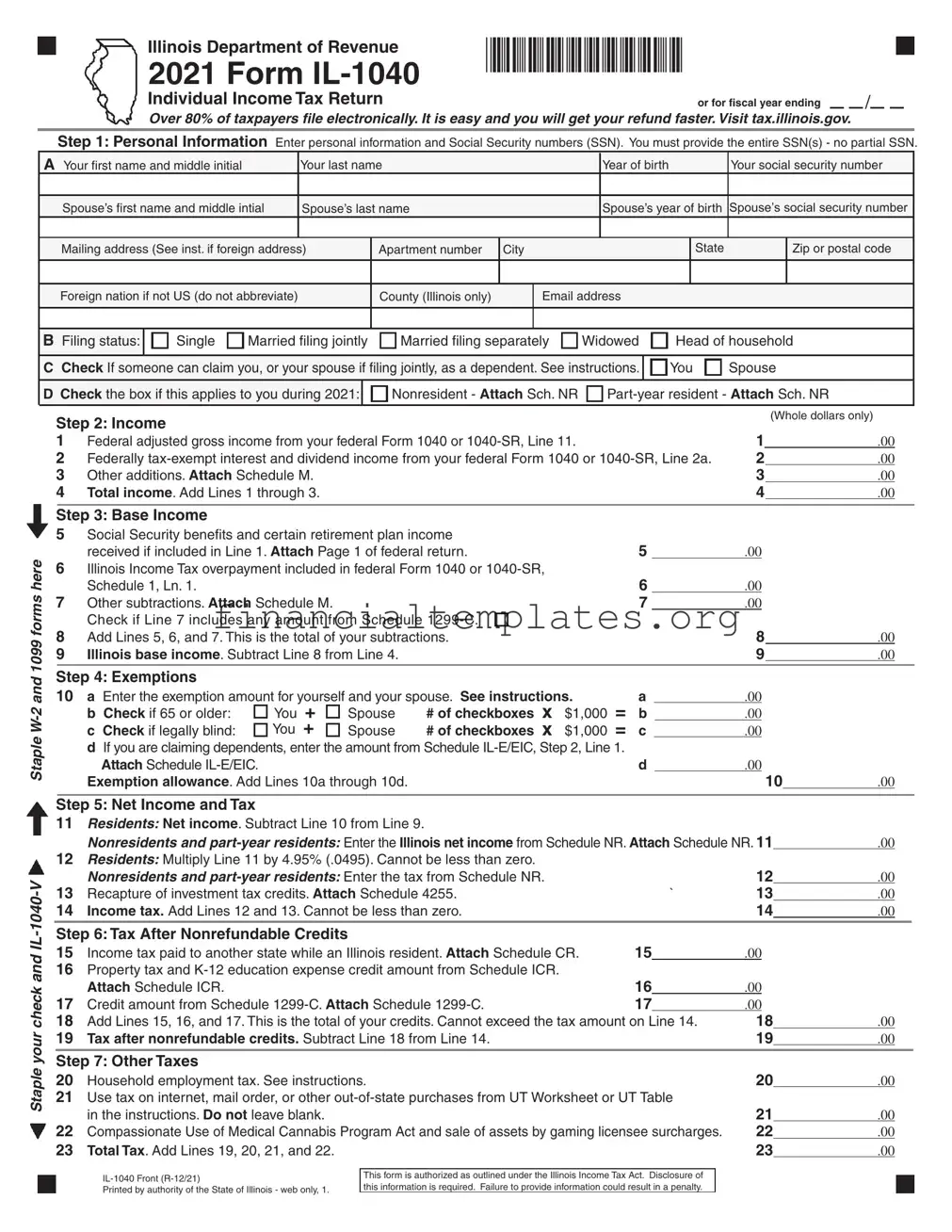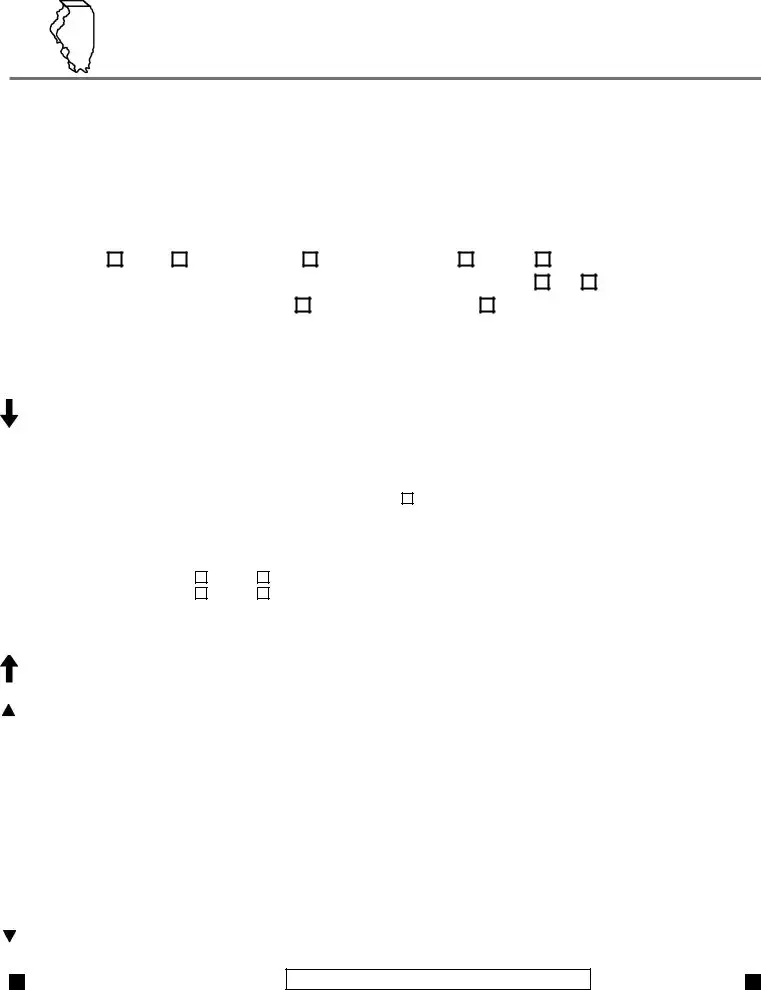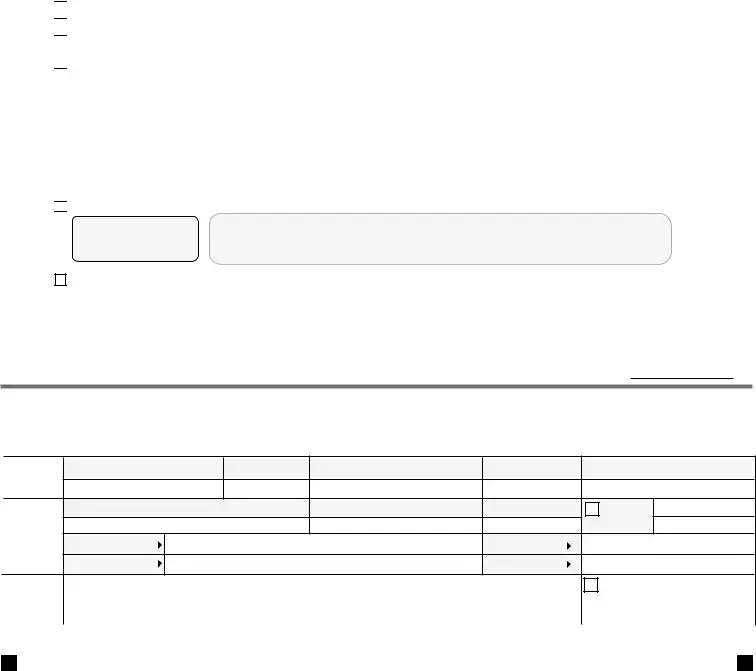The federal Form 1040 Individual Income Tax Return closely mirrors the Illinois Tax form IL-1040. Both forms require taxpayers to provide personal information, report income, and calculate the taxes owed or refund due based on the income reported. They share a structure that begins with personal details, moves to income reporting, deduction applications, and ends with a calculation of the tax liability.
Form W-2 is integral to both the Illinois Tax form and federal tax filing as it documents the income earned by employees, taxes withheld, and other pertinent information needed to accurately fill out tax returns. Taxpayers must attach their W-2 forms to their tax returns as evidence of the income and tax withholding reported.
The 1099 forms, similar to the W-2, are necessary for completing both the Illinois Tax form and the federal tax returns. These forms report various types of income outside of traditional employment, such as freelance earnings, interest, dividends, and government payments, playing a crucial role in ensuring complete income reporting.
Schedule M, necessary for reporting certain additions and subtractions to income on the Illinois form, has a federal counterpart that adjusts income based on specific criteria. Both schedules are designed to ensure taxpayers only pay taxes on their adjusted gross income, after accounting for allowable adjustments.
Form IL-1040-V, a payment voucher included with the Illinois Tax form, is similar to the federal Form 1040-V. These vouchers are used when making payments by check or money order, providing a structured way for governments to track and process tax payments efficiently.
The Illinois Schedule NR, required for nonresidents and part-year residents, echoes the federal nonresident income tax return. Both forms calculate tax liability based on income earned within the respective tax jurisdictions, ensuring that taxpayers pay the correct amount to each state or federal government.
Schedule ICR, which offers credits for property tax and educational expenses in Illinois, reflects the federal approach to tax credits. By offering specific tax credits, both the state and federal systems aim to reduce the tax burden on individuals based on eligible expenses or activities.
Schedule IL-E/EIC, pertaining to the Illinois Earned Income Credit, parallels the federal Earned Income Tax Credit (EITC) form. These credits aim to support working families with low to moderate income, demonstrating both systems' efforts to use tax policy to address income inequality.
Lastly, the Illinois Use Tax and the federal use tax address purchases made out-of-state where sales tax was not collected. Both taxes ensure that taxpayers pay their fair share of tax on all purchases, whether they are made in-state or not, preventing a loophole in tax collection.
Together, these documents ensure the comprehensive and fair assessment of taxes at both the state and federal levels, seeking to capture all forms of income and eligible deductions or credits to accurately determine the tax liability or refund due to each taxpayer.



 Check if at least
Check if at least  Check if you or your spouse are 65 or older and permanently living in a nursing home.
Check if you or your spouse are 65 or older and permanently living in a nursing home. Check if your income was not received evenly during the year and you annualized your income on Form
Check if your income was not received evenly during the year and you annualized your income on Form  Check if you were not required to file an Illinois Individual Income Tax return in the previous tax year.
Check if you were not required to file an Illinois Individual Income Tax return in the previous tax year.
